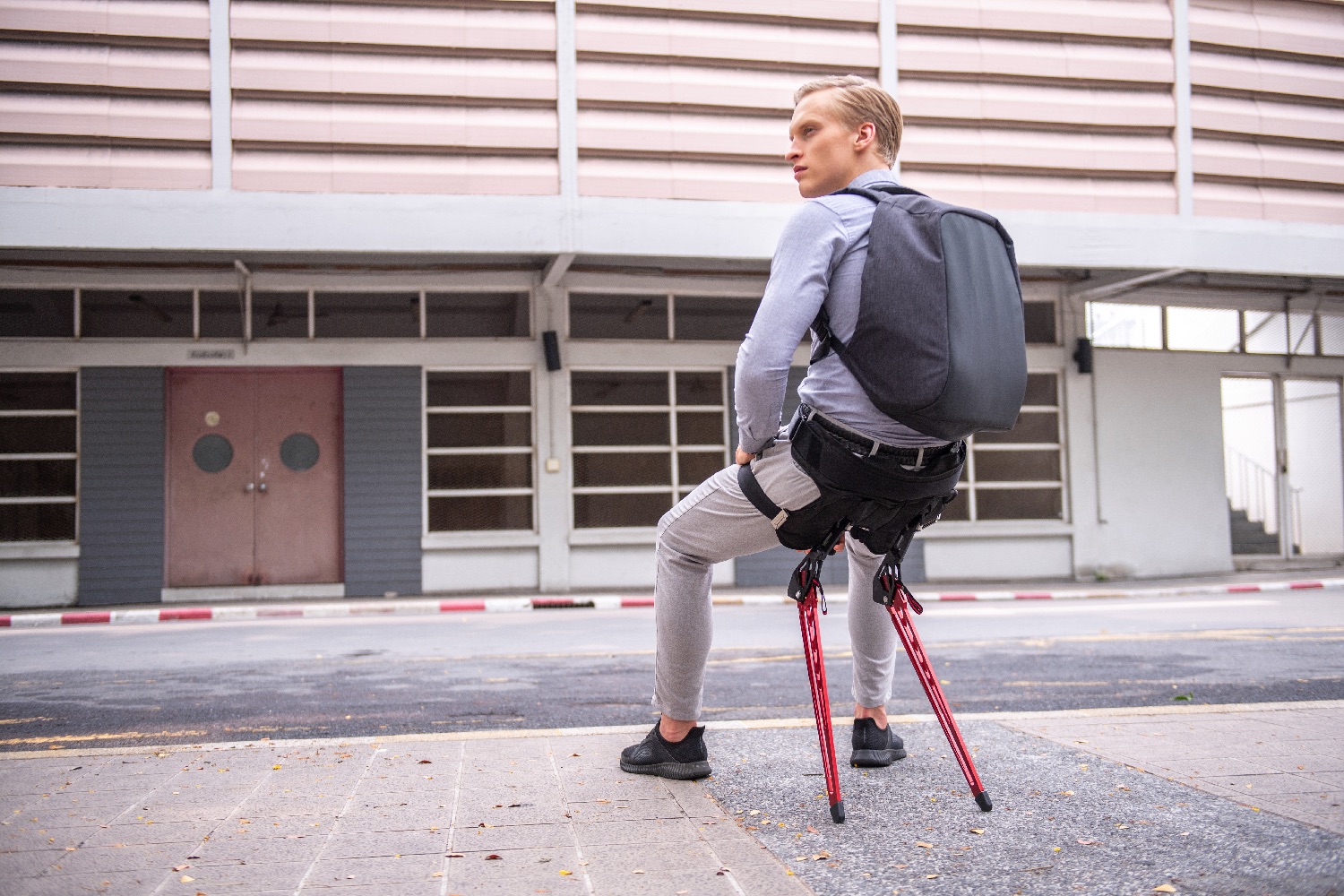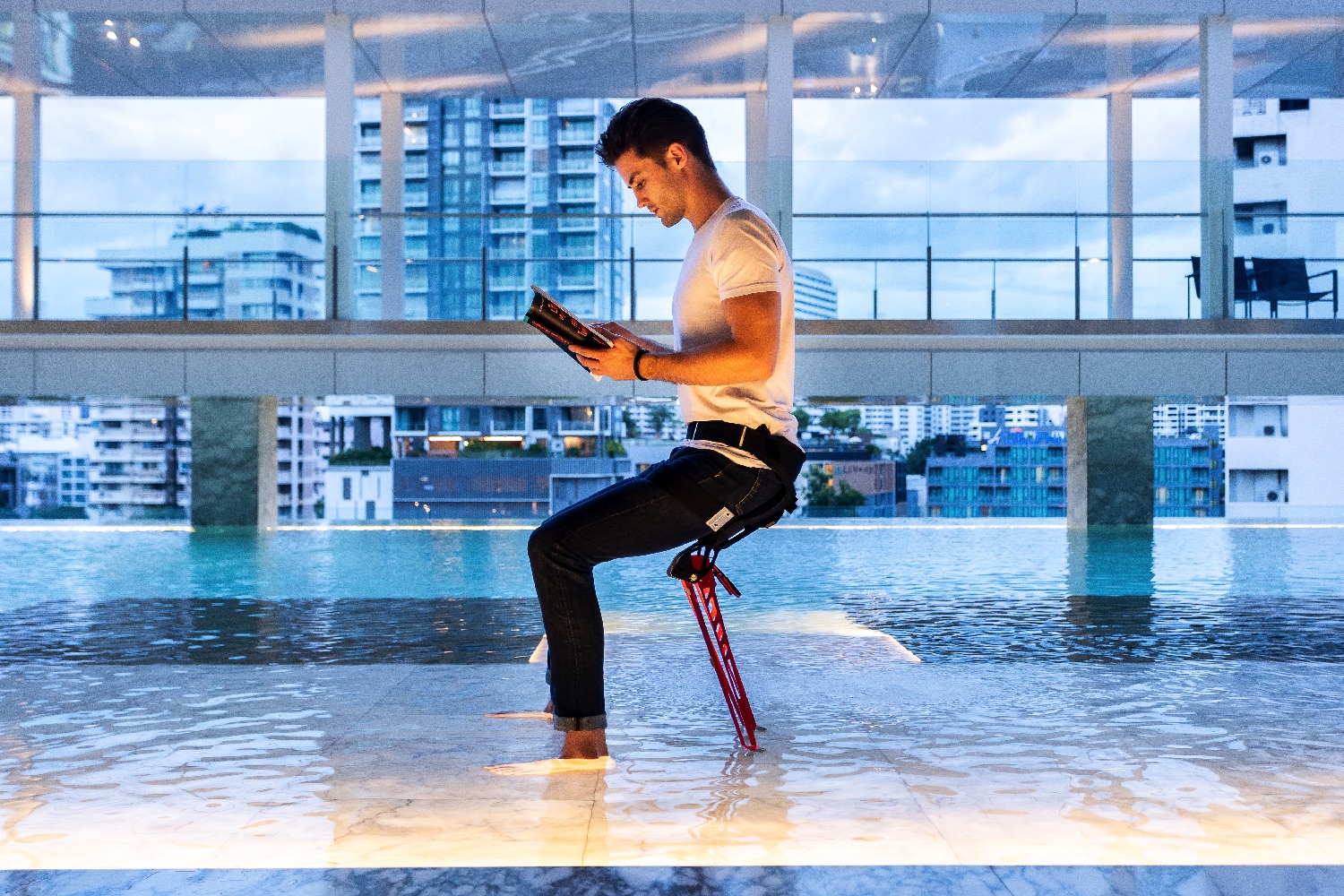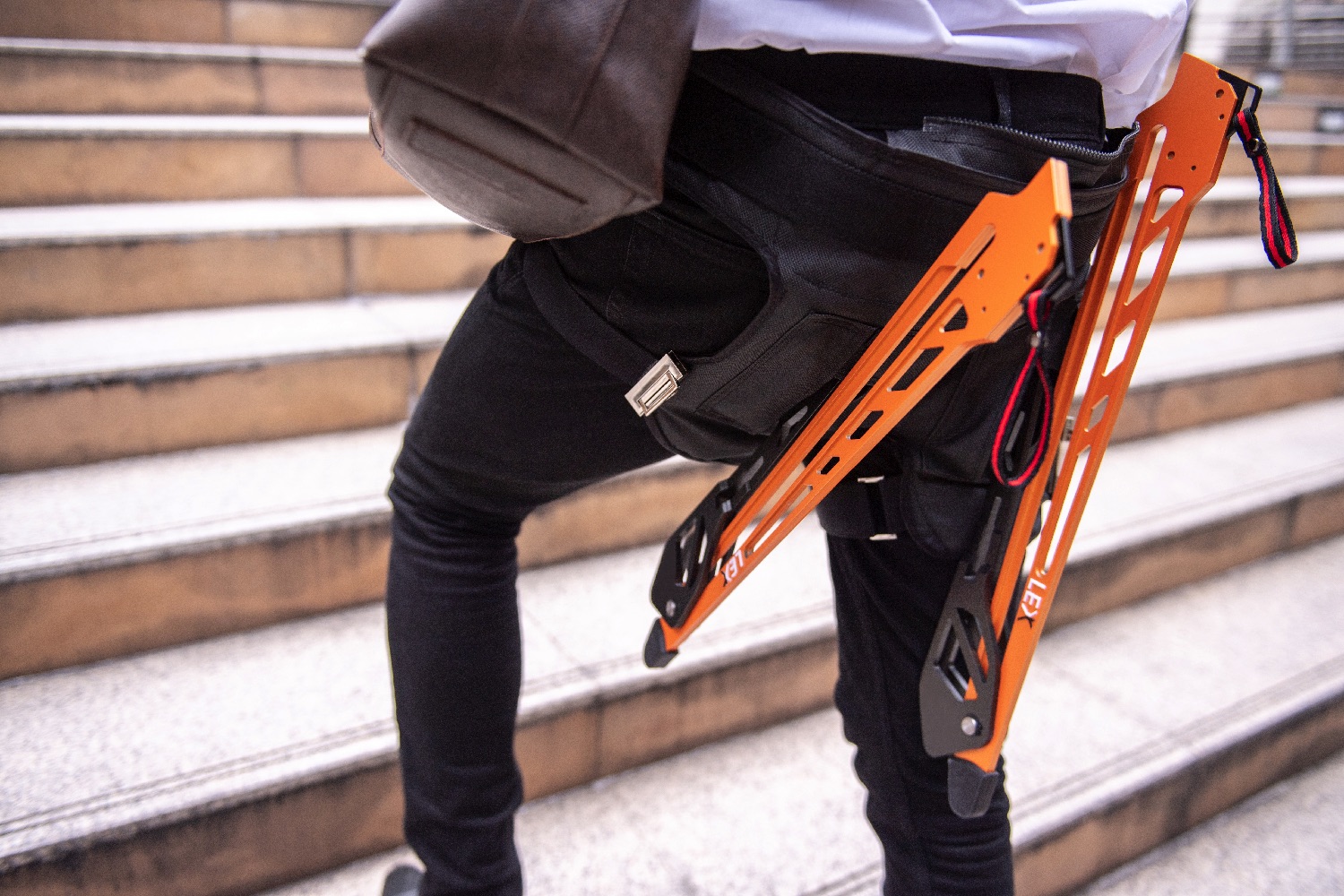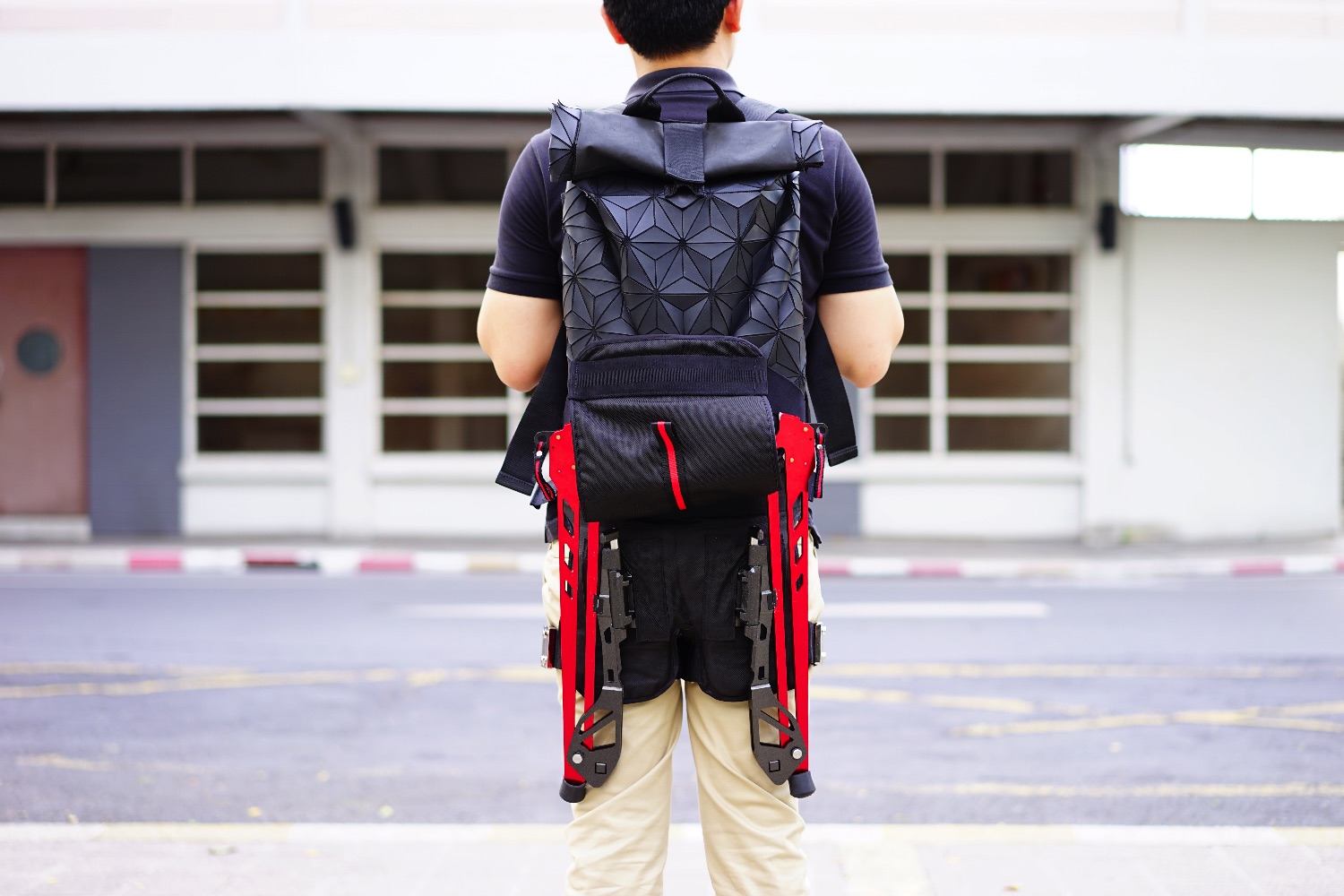How awesome would it be if, any time you started to feel tired, you could just kick back and relax on a chair that appears seemingly from out of nowhere? What if this miraculous chair also happened to be one of the most ergonomic sitting devices you’ve ever encountered, promising a seat that ensures you maintain the best possible posture? That is the mission statement of a fancy new Kickstarter campaign for Lex, a pair of wearable, folding exoskeleton legs that just so happen to transform into an ultra-versatile portable seat.
“You can lead a better life and prevent a lot of injuries by maintaining the correct posture, caring for your shoulders, and finding a chance to relax your body more,” Lex team member Don Plooksawasdi told Digital Trends. “If you find that hard to do in your daily life, the Lex is here to help.”
The lightweight, 2.2-pound exoskeleton legs retract when they’re not in use, giving you the ability to move around easily and without any restrictions. (You can even jump while wearing it!) It attaches to your body just like a belt, requiring only three straps. When it’s in folded mode, the Lex is hardly visible from the side.
Whether you want it as an easy accessory for festivals and other outdoor events, or simply fancy a superior alternative to the chair for your workplace, this could be the answer you’re searching for to make life more convenient and comfortable. Well, so long as you weigh 264 pounds or less.
As ever, we offer our usual advice about the potential risks of crowdfunding campaigns — which can mean delays, or even products that never ship or don’t ship quite as expected. However, if you’re happy to take the risk, head over to Lex’s Kickstarter page to pledge your cash and support. A single Lex unit costs around $215, with $45 extra for shipping to the U.S. The product, available in four colors, is due to ship to customers in December.
We’ve previously covered some awesome high-tech exoskeleton projects here at Digital Trends. While some are more high tech and servo-assisted than Lex, this may just turn out to be our favorite!







